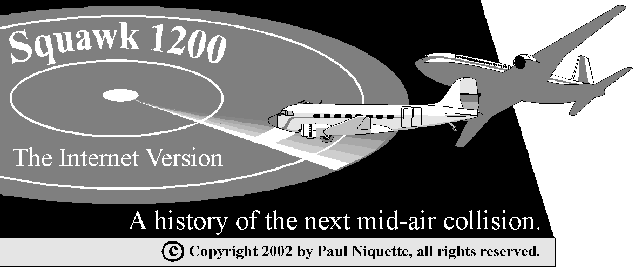

|
Chapter 8 Man-Machine Simulator By the end of 1959, NAFEC had their working replica of the Idlewild radar room, complete with scopes, radios, and coffee pot. In an adjoining room, sat rows of ordinary citizens ("housewives," in the parlance of the time), who were recruited from the surrounding community to act as "pilots." Each was trained to operate a console, which had simplified instruments and controls resembling those in a cockpit controlling racks of analog computers that imitating the flight characteristics of various aircraft and electronically "flew" through the simulated radar environment. To set up a flight during an experimental session, each console operator followed a script, which gave the identity and type of plane to be entered on thumb-wheel switches, along with the initial conditions -- position, heading, airspeed, altitude. At the designated start-time, a simulator pilot would put down her needle-point and throw a switch on the console. Instantly, a fresh blip would show up on an approach controller's screen next door. From then on, make-believe radio calls would be exchanged, clearances given and followed, requests made and granted. After a simulated landing, the pilot turned the switch off and waited for the start of the next assigned "flight." Members of the research team worked behind the scenes, improving the simulator and providing analyses of the experimental data. There was no small satisfaction in developing a system with that level of complexity and in seeing it work to perfection. Something like building a model railroad. The FAA people seemed to derive considerable pleasure from operating the thing, a gigantic, fifties version of a video game. Experiments were designed to test a number of hypothetical changes in procedures. Some imposed a ferocious increase in controller workload. None of them showed a significant improvement in runway capacity. Meyer, McLaughlin, and the others were not surprised in the least with the disappointing results. The only automation, so to speak, was the replacement of flight progress strips in their extruded aluminum frames by a computer driven display. There again, though, the computer was unable to bring its best skills to bear on real-world problems. It was merely used as an expensive replacement for hand-written documents. The man-machine simulator at NAFEC soon established itself as a showcase for the FAA's modernization efforts. Henderson was promoted to deputy something-or-other. Developing improvements in air safety took a back seat to the experimenting, the review meetings, the refinements of the simulator. Plainly, as is so often the case, the research itself had become institutionalized. A genuine discovery might have spoiled the party. Meanwhile, although the number of actual mid-air collisions had gone down from the previous year, reports of near-collisions was rising at an alarming rate. There were more than a hundred a month during 1959. How long would it be, we wondered, before a slight error in vectoring or altitude assignment or controller distraction -- how long before the next major mid-air? A reasonable supposition was that top level officials would apply pressure to see some return on the FAA's investment -- that the controller-experts at NAFEC would then have to loosen their grip on the reins of research. Impatiently, I watched for an opening to initiate serious work on a concept which smoldered in my soul. I longed to make a frontal attack on a problem that others found intractable: track-while-scan. There was no doubt on my part: the technology was within reach. It would mean the end of mid-air collisions. Forever! My hopes were raised the day Pete Quesada, the first head of the FAA made his one and only appearance at NAFEC. Experimental work ceased for the morning. We prepared a special demonstration run for the simulator. I had worked late the previous night on some talking papers, hoping against hope I might be asked to give a briefing. Unfortunately, Quesada arrived earlier than scheduled -- during lunch hour, in fact. I heard later what happened. He passed briskly through the computer lab, stopping only momentarily to stare at a simulated radar screen. A member of his entourage began to explain its technicalities to him. "Why was the power left on?" inquired Quesada. |
| Home Page | Table of Contents | Chapter 9 | Contact Author |